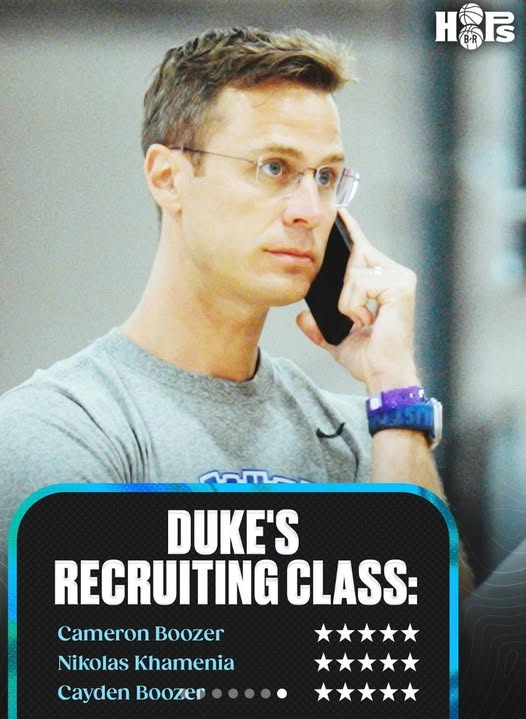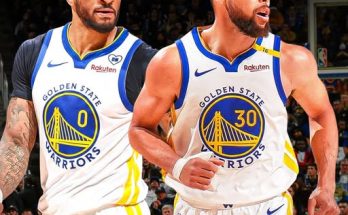In the fast-paced world of college basketball, the focus is typically on the game itself—the thrilling buzzer-beaters, the fast breaks, and the incredible athleticism on display. But behind the court, a different kind of drama is often unfolding, one that can shape a program’s future far more than any single game. As the Duke Blue Devils continue to carry their legacy of excellence under head coach Jon Scheyer, recent revelations have surfaced that the program is currently grappling with turmoil that could threaten its position at the top of the college basketball hierarchy.
Bleacher Report Hoops recently exposed Duke as one of the few top-tier programs in college basketball currently facing significant internal challenges. While other powerhouse teams like Kentucky, Kansas, and North Carolina have seemingly managed to maintain their equilibrium in the face of the ever-changing dynamics of college basketball, Duke’s troubles appear more profound and far-reaching.
The source of Duke’s turmoil is multifaceted, drawing from several critical areas—recruiting, player development, and the internal culture of the program. These issues come at a time when the program is at a crossroads, navigating the transition from the legendary tenure of Coach Mike Krzyzewski to a new era under Scheyer. While there were always going to be growing pains in this transition, the problems facing Duke may have been far more complex than many anticipated.
One of the most immediate concerns for Duke is its inability to secure top-tier talent in the way it has historically done. The Blue Devils have long been known for their ability to attract the nation’s best high school players, and for much of the past several decades, it seemed like an automatic lock that any highly touted prospect would find their way to Durham. However, in recent recruiting cycles, Duke has found itself losing out on key players to other programs. For instance, the highly coveted 2025 recruiting class has seen Duke miss on several prime targets, with top players opting for rival programs such as Kentucky and Kansas.
Recruiting has always been a cornerstone of Duke’s success, so missing out on these coveted recruits is a blow to the program’s long-term viability. With the rise of the NIL (Name, Image, Likeness) landscape, programs with robust financial backing have an increasing ability to compete with Duke in ways that were once unimaginable. The Blue Devils have traditionally relied on their academic reputation, elite coaching, and blue-chip recruiting classes to attract talent, but in the new world of NIL deals, that formula is no longer guaranteed to work.
While Scheyer’s coaching abilities have been lauded by many, including those within the program, the challenge of adjusting to the changing landscape of college basketball has proven more difficult than expected. Even as Duke has continued to recruit at a high level, there is an increasing sense of disillusionment among certain factions within the fanbase, who question whether Scheyer, despite his pedigree as a former Duke player, can maintain the same level of success as his legendary predecessor. With Krzyzewski’s shadow looming large over Scheyer’s every move, it’s easy to understand why expectations are sky-high—but the pressure is undoubtedly building.
Beyond the recruiting challenges, Duke’s roster has not always been as harmonious as one might expect from such a storied program. The team has experienced a number of high-profile player exits over the past few seasons, some of which have left fans scratching their heads. There have been reports of internal dissatisfaction, with some players reportedly feeling alienated from the team’s overall culture. This is not a situation unique to Duke—many programs in college basketball have faced similar struggles—but when a program of Duke’s stature experiences these issues, they take on an added level of significance. Player development, which has always been one of Duke’s defining characteristics, seems to be faltering in a way it hasn’t in the past. Some recent high-profile recruits have underperformed or transferred out, leaving Duke with a sense of uncertainty about the future of its roster.
This internal turmoil, however, goes beyond player exits and underwhelming performances. One of the most critical issues facing Duke is its identity crisis. As a program built on tradition and success, Duke has always relied on a clear and defined culture. Under Coach K, that culture was rooted in toughness, discipline, and the ability to perform under pressure. The question now becomes whether that culture can remain intact as Duke enters a new era. With changing dynamics in recruiting and player expectations, there are fears that Duke’s historical dominance may be fading.
Moreover, the pressure of high expectations is exacerbated by the increasing presence of rival programs that are not only recruiting at an elite level but are also fostering cultures that appeal to players in new ways. The University of Kansas, for example, has continued to recruit at an elite level under Bill Self, winning championships and maintaining a steady flow of talent. Kentucky, led by John Calipari, has reloaded year after year with top recruits, offering players a chance to develop and compete on a national stage. Even programs like UCLA and Arizona have seen a resurgence in recent years, adding further competition to Duke’s already challenging recruiting landscape.
As Duke faces these challenges, the team’s performance on the court will inevitably be impacted. While Scheyer’s first few seasons have shown flashes of potential, there have been more than a few stumbles along the way. While the team’s play has been far from disastrous, it has lacked the crispness and consistency that Duke fans have come to expect. This inconsistency, coupled with the unrest surrounding the program off the court, has created a tense atmosphere surrounding the Blue Devils. The scrutiny placed on Scheyer’s leadership is only intensifying as the program’s struggles continue to mount.
Despite these challenges, Duke is far from a program in collapse. The school has an incredibly rich basketball tradition, and its resources, both financially and institutionally, are second to none. However, for the first time in decades, Duke faces a crossroads where its legacy and future are in serious question. The next few seasons will be critical for Scheyer and the program as they navigate these turbulent waters. Can Scheyer rise to the occasion and guide Duke back to its previous dominance, or will the pressures of modern college basketball be too much for even a coach with his pedigree?
In conclusion, Duke’s current turmoil is indicative of a larger shift within college basketball—a shift where traditional powerhouses must adapt to a rapidly changing landscape. The Blue Devils, once seemingly untouchable, now find themselves grappling with issues that threaten their position as one of the sport’s elite programs. As they navigate these choppy waters, Duke fans will be watching closely, hoping that their team can weather the storm and return to the top of the college basketball world. Only time will tell whether Jon Scheyer is the coach capable of leading them through these turbulent times or if the challenges are insurmountable. But one thing is clear: the days of Duke’s automatic dominance may be coming to an end, and that reality is forcing the program to confront its future head-on.



